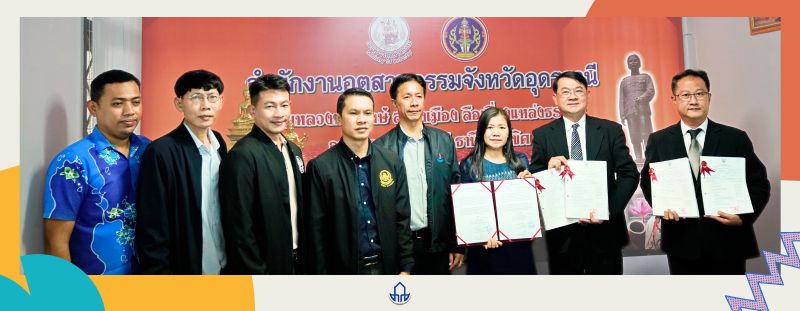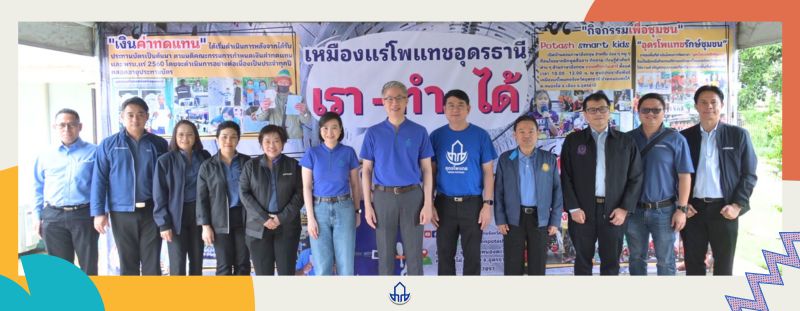| |
Project Implementation
The various methods of mining design are developed continually in correlation with labor, supporting instruments, or modern technology.
The best selected mining method is determined based on size and shape of the ore body, moreover the overburden conditions, strength of the ore bearing
strata
and the country rock, groundwater aquifer, grade of ore and other related factors are also considered for mine design.
Mining Method
Potash mine in Udon Thani is the room and pillar underground mine by choosing the type of decline to access to the underground mine to excavate
the sylvinite ore type at the depth of 300-380 m. The main principles of mine design are based on the three geotechnical concepts as the following:
- The excavated cavities are designed to be sufficiently stabilized in order to mine underground efficiently.
- To control the surface subsidence within the defined limit that is not impact to the surface utilization.
- To protect the underground water to leak down to the underground mine.
According to details of selected mining method, the room and pillar method is suitable for the mineral deposits in flat strata or undulation with its stratum
of various thicknesses and not too thick. This mining method is very commonly used in sedimentary rocks, such as Coal mines and Potash mines.
Mine is
designed to excavate ore out in some areas and left some in-situ ore as pillars to support the mining roof. Size of excavated rooms and pillars is based
on the
strength and thickness of ore strata, rock types of the roof and floor, as well as thicknesses and properties of the overburden. There is a Mathematic
model,
to calculate the ore without impacting to the stability of the mine both in the short and long terms. The room and pillar
design
is safety and efficiency used in underground mining, and this method was also used in Saskatchewan, Canada and Potash mines in Weera, Germany.
|
|
| |
Main Development Work and Preparation for the Room and Pillar Underground Mine Method
Preparation of room and pillar underground mine begins by construction of the decline-typed underground mine access, which will be able to be easily
and efficiently conform to the surface activities. This will be the connection way between the surface and ore stratum and the main development and panel drift
will
then be developed at underground mine in ore strata resulting to derive ore products as well.
Advantages for Room and Pillar method
1. easy and flexible
2. practical to use with various sizes of pillars
3. provides safety- extraction
4. Ability to excavate the panel left around the drilled hole area and easily adjust to comfort the geological conditions changed.
5. Support system can be adjusted based upon the conditions changed.
Potash Ore Processing
The potash ore that extracted from the mine will be transported to the ore processing plant for separating potash ore from salt and clay mixture.
We called this process “the flotation process”. Fined potash particles derived from flotation process will be further dried and selected the
suitable size
of raw material
used to produce potash and compound fertilizers and other chemical products. The particle size of potash from the dust filter will be
transferred to the
crystallization processing to produce potash products
Tailing Management
Tailings derived from the ore processing is mainly Sodium Chloride (NaCl) or commonly known as “salt” without any toxin components.Tailings will be stored
at the tailing pile area,
which is lined with HDPE sheet before being used for underground backfill to minimize the land subsidence. The backfill will be started in year
6 after mine
operation due to the first 5 years is the preparation period to obtain sufficient underground space to be backfilled. Tailing stored will subsequently
be backfilled and fully completed at the end of mine life. This results that there is no tailing left on surface.
Brine Management
Potash production can create the brine from various sources as the following:
1.The flotation process.
2.The rainfall on tailing pile.
These brines will be stored in the brine pond prior to transfer to evaporator to obtain the fresh water for further re-use in processing. The floor will be lined
with 2 layers of HDPE plastic,
with
2
millimeters
thick for first layer and 1.5 millimeter for second layer. There is underground water collection pipeline system to be
monitored and collect brine if
leakage occurs.
Transportation
The potash productions will be transported to eastern seaport by the railway route for distribution of potash overseas. The rest of potash will be transported
by trucks for distribution to customers in the country; such as the local fertilizer plants
|
|






